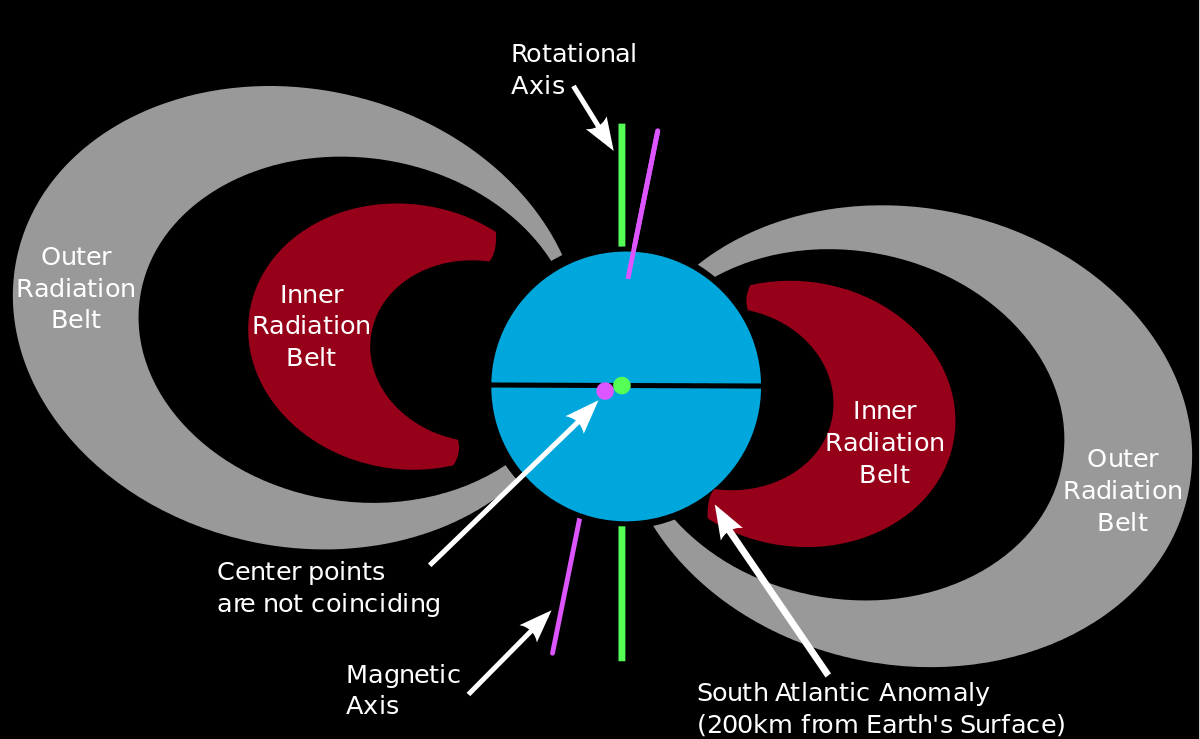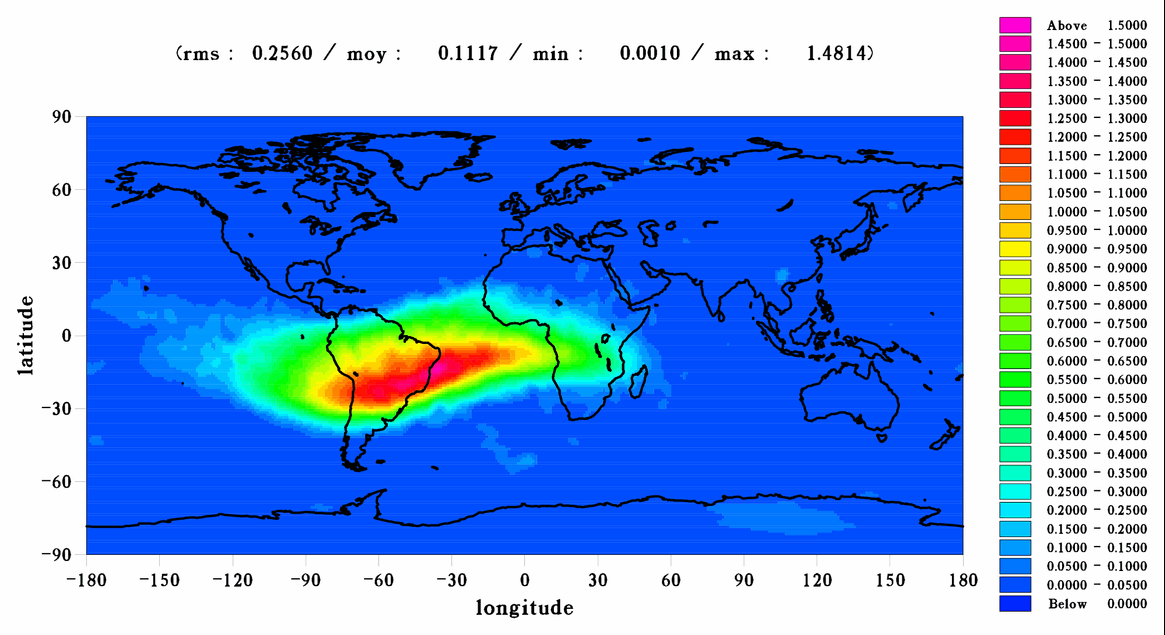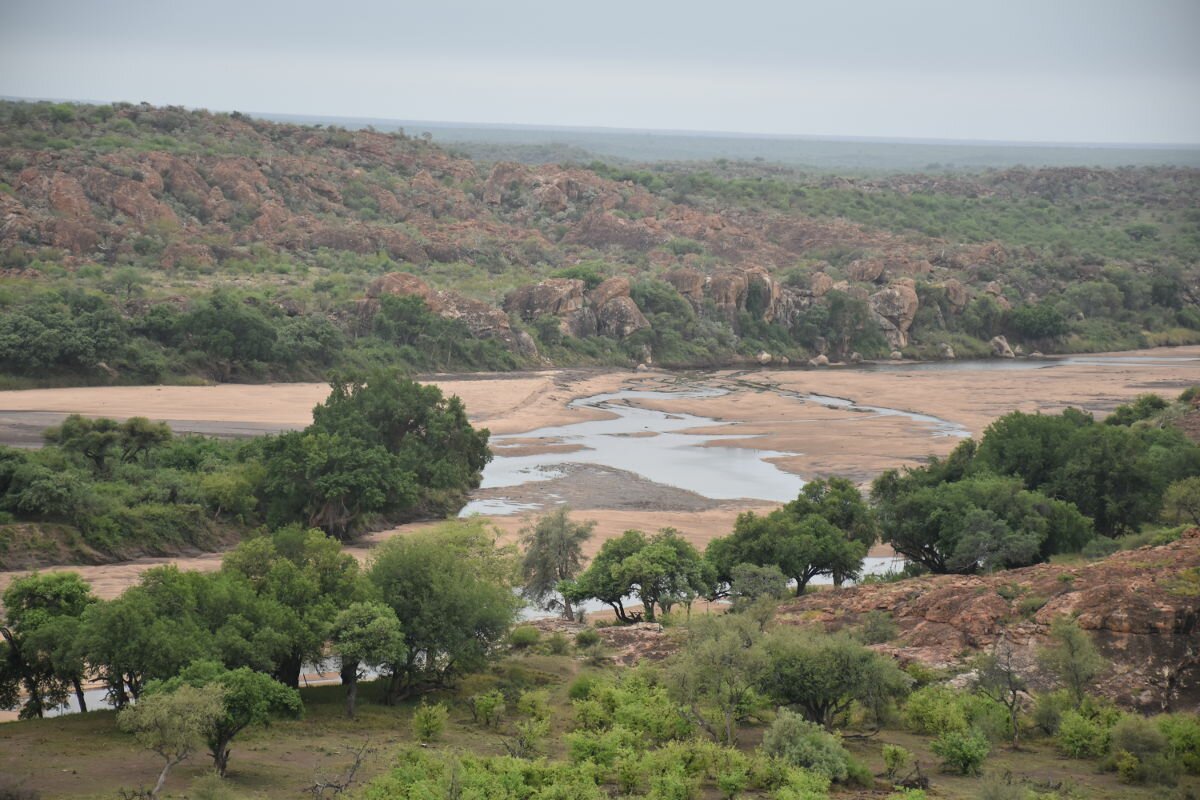Mysterious Anomaly Beneath Africa is Weakening Earth’s Magnetic Field
A disturbing trend was reported in a study published in Geophysical Review Letters earlier in 2018. Above our heads, something isn’t quite right, to phrase it in a slightly dramatic manner as one article did.
It’s insane to think how many factors sustain human life and general balance on our planet: how many factors we don’t consider, and realistically couldn’t even tackle or change because it’s just nature. However, some human activities seem to dramatically affect planet Earth’s natural balance.
Our planet’s magnetic field is in a severe state of weakening, according to this research published nearly a year ago. According to their estimation, it’s part of a pattern that has lasted for over 1,000 years.

(Image credit: en.wikipedia)
If our magnetic field doesn’t do even more than we know, what we do know is that it protects us from seriously dangerous cosmic radiation, the solar winds, ect. In other words, hypothetically a lot of people would get cancer from the dangerous rays entering our atmosphere from space if it weren’t for the magnetic field in its current state.
A pole reversal would probably be the result of the magnetic field weakening even more, according to these researchers. The magnetic field of course sets the North and South Poles.
According to the official narrative, the last time a pole reversal occurred on our planet was about 780,000 years ago, although they claim it almost happened again 40,000 years ago. Those are incomprehensibly vast stretches of time, it’s difficult to even imagine what our planet looked like 780,000 years ago.
The pole reversal takes thousands of years to complete, so it isn’t an instant thing. As most people who have researched pole reversal know, it’s not very possible yet to predict when the next one will happen. All of this info is commonly understood when it comes to pole reversal.
What most people don’t know, is that a certain region on Earth known as the South Atlantic Anomaly is particularly weak, to the point where it’s allegedly dangerous for satellites to fly over it.
The South Atlantic Anomaly is a massive expanse of the Earth’s magnetic field, stretching from the South American tip of Chile to Zimbabwe in Africa, apparently being very concentrated around the central/southern region of South America. A significantly higher amount of radiation entering the atmosphere can be measured in this region.

(Image credit: aviso.altimetry)
“We’ve known for quite some time that the magnetic field has been changing, but we didn’t really know if this was unusual for this region on a longer timescale, or whether it was normal,” said a University of Rochester physicist named Vincent Hare.
Scientists rely on archaeomagnetic data, which is physical evidence of the Earth’s past magnetism, to determine how the magnetic field behaved in the past. For some reason, in this particular anomalous region, they can’t find much archaeomagnetic data. Apparently the shape of the landscape, probably the fact that it’s over the ocean, is making the acquisition of archaeological relics difficult. There isn’t much talk about South American evidence of past magnetism.
One particular age thought to have been influenced by the magnetism was cited in an article about this, and that was an age in which ancient Africans left evidence of being affected by it, people who resided in the Limpopo River Valley bordering South Africa, Zimbabwe, and Botswana, which is today in this South Atlantic Anomaly region.

(Image credit: travelblogger)
They claim that about 1,000 years ago, the Bantu peoples there in Africa performed an “elaborate, superstitious ritual” in times of difficulty in the environment. An article about this was halfway disrespectful by saying superstitious.
The narrative is, these people burned down their grain bins and clay huts intentionally during times of drought, to try and cleanse the energy and make the rain come again, unaware that they were perfectly preserving environmental evidence of what they had lived through.
“When you burn clay at very high temperatures, you actually stabilize the magnetic minerals, and when they cool from these very high temperatures, they lock in a record of the earth’s magnetic field,” said John Tarduno, a geophysicist from the team performing the research.
So they examined the artifacts left by those people, and they reportedly found that similar fluctuations occurred between 400-450 CE, 700-750 CE, and 1225-1550 CE.
In conclusion, they believe the position of the South Atlantic Anomaly is not something temporary, but something possibly more interesting.
They actually believe one specific geographical characteristic of this region of Africa could be almost the sole cause of the Earth’s weakening magnetic field: and that is a vast reservoir of dense rock titled the African Large Low Shear Velocity Province, about 1,800 miles (2,900 kilometers) beneath the continent of Africa.
It’s quite difficult for any ordinary person to objectively agree with or disagree with this assessment of what is causing the Earth’s weakening magnetic field. In any case, it sounds like some pretty solid research has emerged on this topic. It’s interesting to think how many factors preserve life on Earth.
